Sustainable Flow Workshop Offered Perspectives on Environmental Issues in Maritime Operations
Positive changes towards a more sustainable future are seen in ports. This was confirmed by stakeholders’ representatives in a workshop. organised by Sustainable Flow project. The common themes among the Sustainable Flow pilot site ports are focused on energy efficiency via lighting systems, the electrification of heavy machinery and vehicles as well as the use of green energy.
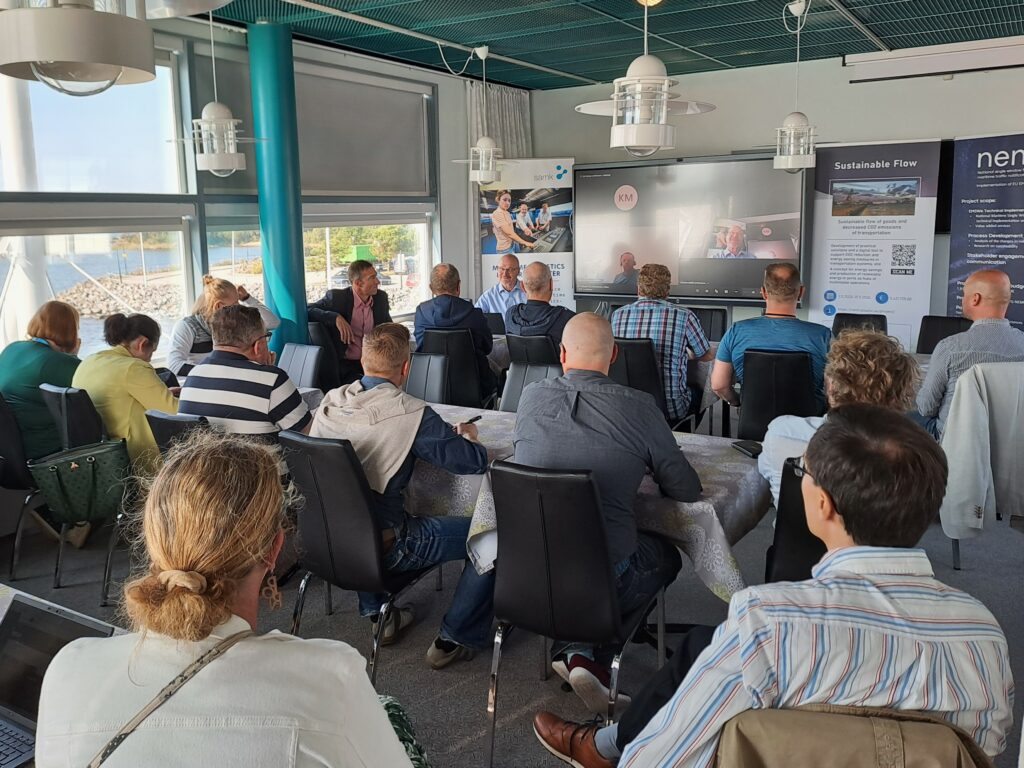
The Sustainable Flow project celebrated the Baltic Sea Day with a workshop in the stunning seascapes of Pori’s Reposaari, Finland. The day’s presentations gave an insight into project progress and offered perspectives on environmental issues in maritime logistics.Administrative Director Mikajuhani Numminen, who gave a presentation on the sustainability related activities at the Port of Rauma, summarises the day’s contribution as follows:
– It is great to see how separate EU projects are intertwined, and how they are starting to have concrete impacts on port operations.
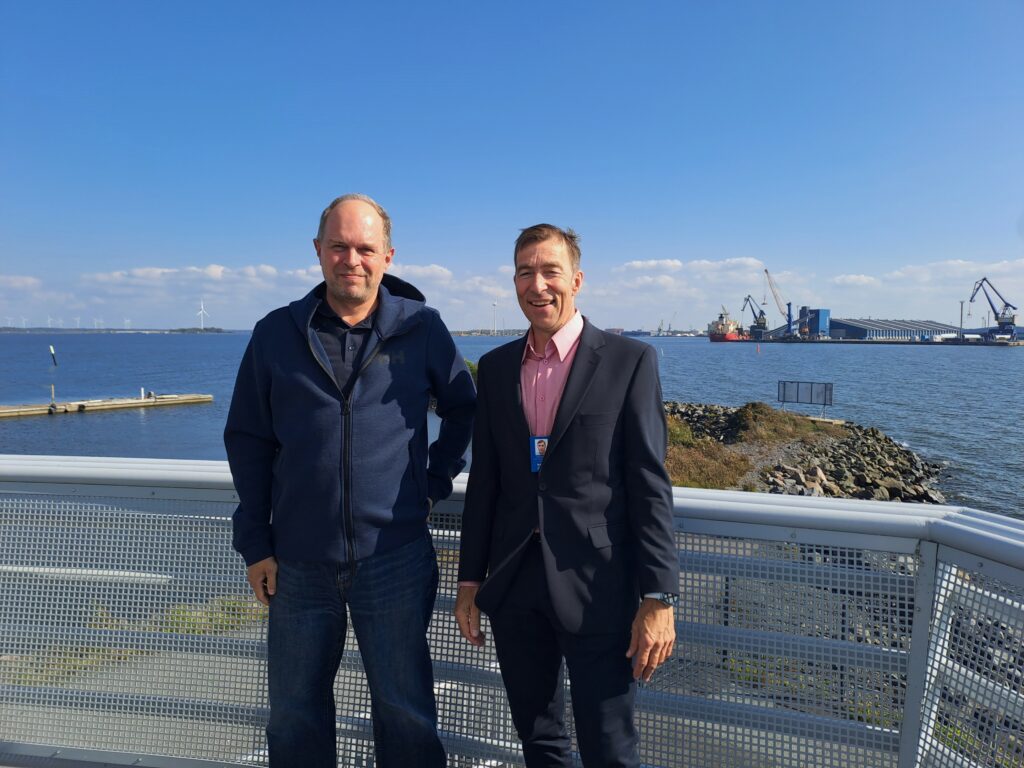
Development Manager Kai Heinonen also gave an overview of how sustainability and the themes of Sustainable Flow project are taken into consideration at the Port of Pori. According to Heinonen it is important that the issues under the workshop’s theme are widely publicised.
– Ports are involved in many projects, and they bring changes with them. It must be noted that while we are working towards more sustainable operations, most of the emissions are not directly from the port but as result of the operations of the port operators, he says.
While in general it can sometimes be challenging to organise enough time for projects alongside the regular workload and the day-to-day running of the business, Heinonen says that it is great how ports have managed to do it anyway.
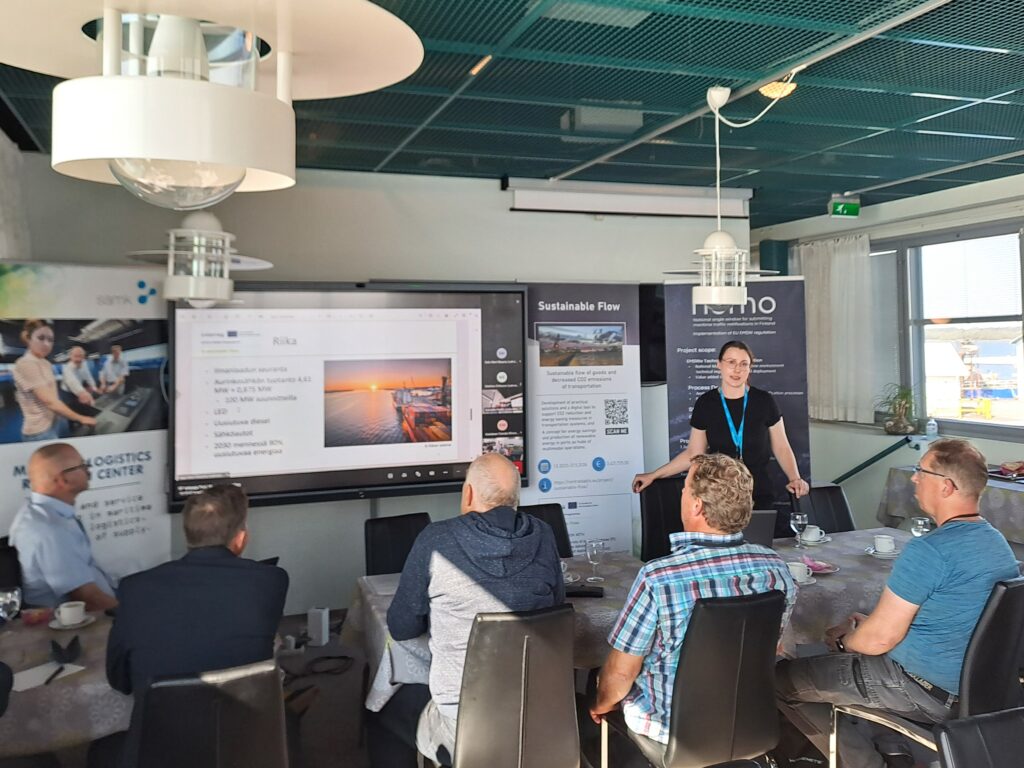
Towards Greener Baltic Sea on Many Fronts and Ways
Researcher Meri-Maaria Salo from the Maritime Logistics Research Centre of SAMK presented the other five Sustainable Flow pilot ports, Mariehamn, Tallinn, Norrköping, Oxelösund, and Riga, and their ongoing work towards a greener future. The common themes and actions among the ports were focused on energy efficiency via LED lighting and smart systems, the electrification of heavy machinery, equipment and vehicles, and green energy. The implementation of shore power in the future was also highlighted in many of the ports as it can help lower the emissions of the vessels visiting the ports which make up a large part of the port’s carbon footprint.
Sustainable Flow was not the only project represented at the workshop. Chief researcher, docent Minna Keinänen-Toivola presented the NEMO CEF project from a sustainable development perspective. NEMO is the upcoming national “single window” for maritime traffic reporting. Maritime Logistics Research Center of SAMK is responsible for process development in NEMO CEF project. The lively discussion highlighted the role of stakeholders and their expectations for the new digital tool, NEMO.
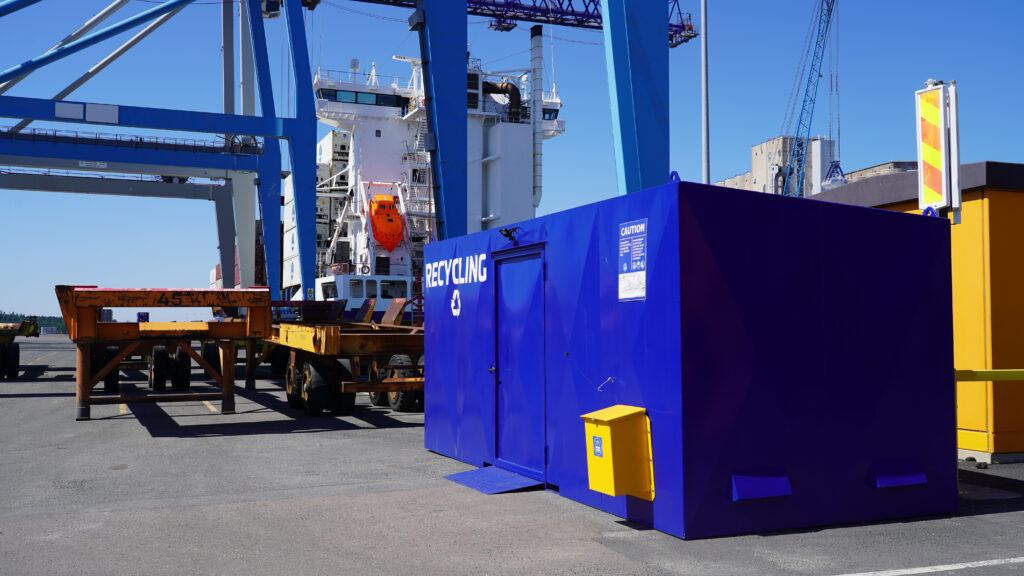
Progress Towards more Sustainable Everyday Actions
So far, the project has, among other things, examined the conditions for developing more sustainable practices in the pilot ports. Representatives from the ports of Pori and Rauma gave several practical examples of their work towards more environmentally friendly port operations, for example more efficient recycling, reusing concrete waste, and optimising energy use in buildings.
Numminen and Heinonen note that although there are factors in the port operations’ CO ₂ emission sources that the ports do not have control on, it is possible to influence people’s attitudes and behavior. For example, emissions can be reduced by educating people to drive more economically and ecologically. This is possible both for the port’s own equipment and for incoming vessels.
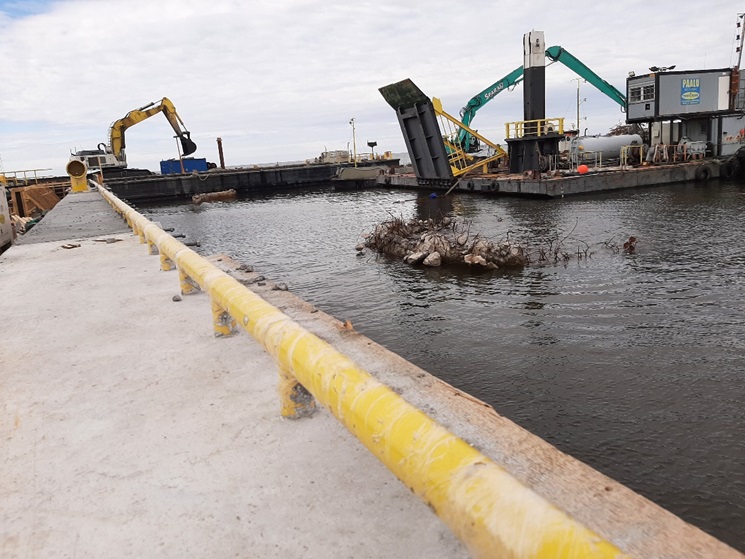
The Workshop Day’s Presentations
The presentations are in Finnish.
Port of Rauma, Mikajuhani Numminen: Sustainable Flow Rauman Satama
https://centralbaltic.eu/wp-content/uploads/2024/10/RSOY-SustainableFlowAccess.pdf
Port of Pori, Kai Heinonen: Sustainable Flow Porin satamassa
https://centralbaltic.eu/wp-content/uploads/2024/10/Sustainable-Flow-Porin-satama-Tyopaja-29.8.2024.pdf
Satakunta University of Applied Sciences, Meri-Maaria Salo: Kestävä kehitys Sustainable Flow -hankkeen muissa pilottisatamissa
https://centralbaltic.eu/wp-content/uploads/2024/09/2024-08-29-SF-Tyopaja-MMS.pdf
Satakunta University of Applied Sciences, Minna Keinänen-Toivola: NEMO CEF ja kestävä kehitys
https://centralbaltic.eu/wp-content/uploads/2024/10/KeinanenToivola_NEMOCEF_KestavaKehitySustainableFlowWorkshop_20240829.pdf
Writers and editors: Krista Valkonen, Hanna Kajander and Meri-Maaria Salo

